Berlin
CITY OF FREEDOM
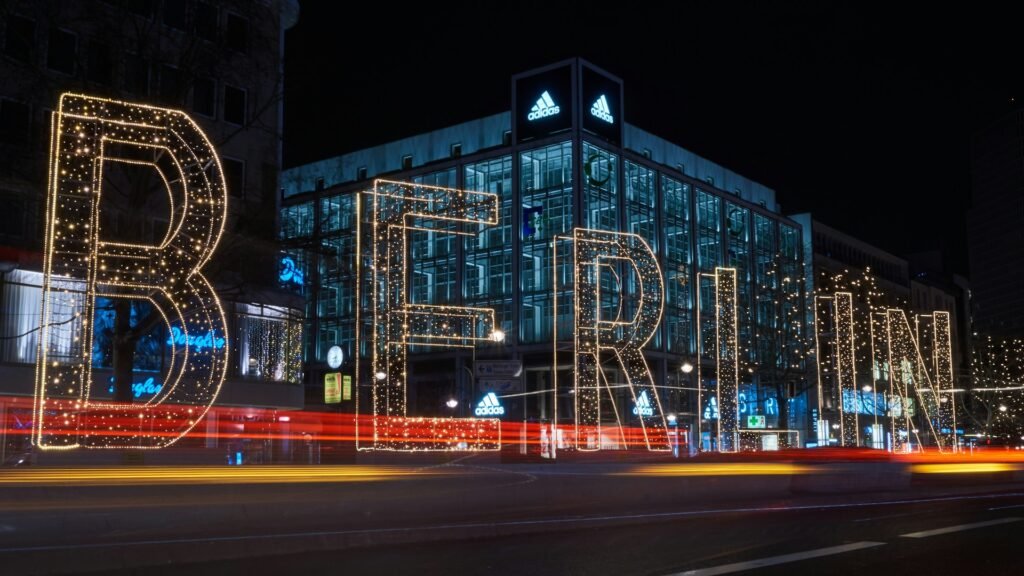
It helps keep this site running, and we appreciate your support!
Sightseeing
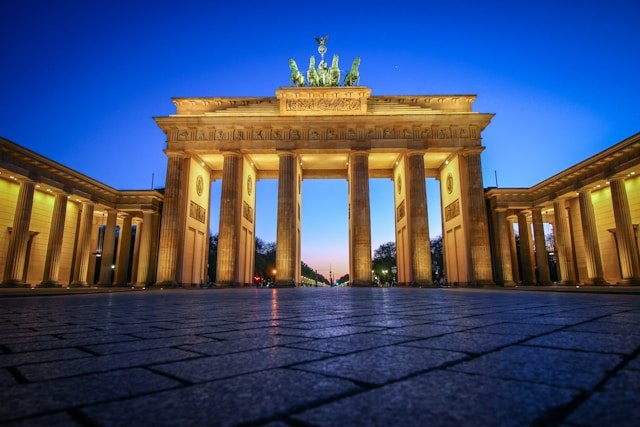
Brandenburg Gate
Rising over Berlin’s Pariser Platz since 1791, this neoclassical sandstone giant—commissioned by Prussian King Frederick William II—stands as a symbol of unity and resilience. Crowned by the Quadriga, a chariot pulled by four horses, it once marked the start of the road to Brandenburg an der Havel. Napoleon swiped the statue in 1806, but it roared back after his fall. The Gate weathered the Cold War, straddling the Wall’s divide, and became a backdrop for Reagan’s 1987 “tear down this wall” plea. Now, its 26-meter frame hosts New Year’s revelry and quiet reflection alike—a must-see blending history, grit, and triumph.

Reichstag
Anchoring Berlin’s skyline since 1894, the Reichstag fuses imperial grandeur with a modern twist, dominating the government quarter. Paul Wallot’s neo-Renaissance shell, scarred by WWII, got a stunning reboot with Norman Foster’s 1999 glass dome—a shimmering beacon piercing the city’s horizon. Climb its spiral ramps for panoramic skyline vistas: the Brandenburg Gate’s silhouette, Potsdamer Platz’s gleam, and the Spree’s curve. The parliament’s heart beats below, but it’s the dome that elevates this landmark, reflecting Berlin’s past and future against the sky. Book free entry online; hit it at dusk when the skyline ignites. It’s a historic heavyweight that reshapes how you see the city.
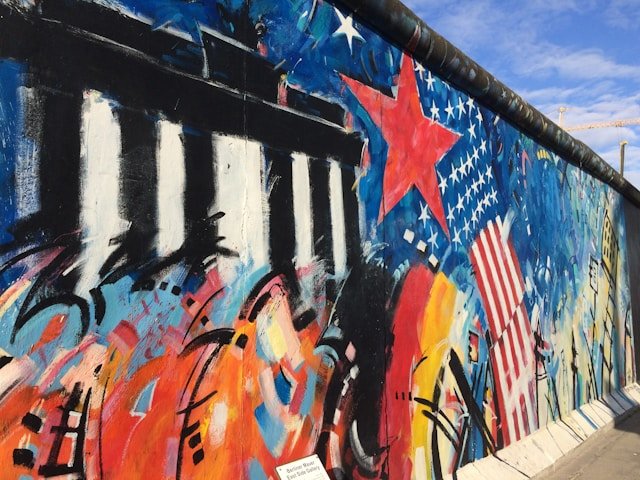
Berlin Wall - East Side Gallery
If you’re wandering through Berlin with a love for history and art, the East Side Gallery is a must-see gem that’ll leave you speechless. Stretching over a kilometer along the Spree River, this vibrant stretch of the Berlin Wall is more than just a relic of the Cold War—it’s a living canvas. After the wall fell in 1989, artists from around the world flocked here to transform the drab concrete into a kaleidoscope of murals, bursting with messages of freedom, hope, and defiance. Iconic works like Dmitri Vrubel’s My God, Help Me to Survive This Deadly Love—you know, the one with Brezhnev and Honecker locking lips—capture the raw emotion of a divided past. It’s not just a photo op; it’s a walk through a story that still echoes today. Pro tip: visit early to dodge the crowds and let the colors hit you full force.
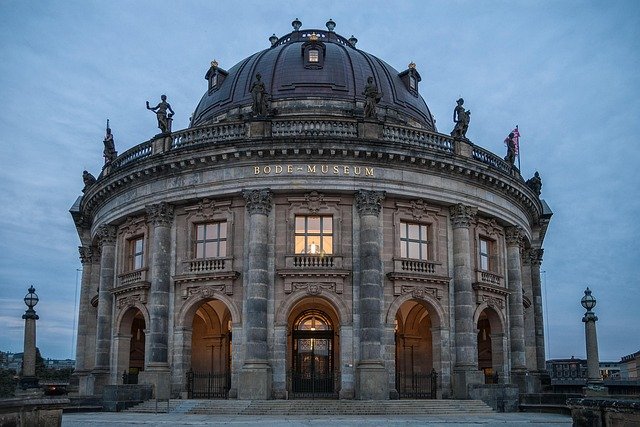
Museum Island
For anyone craving a deep dive into culture and history on their travels, this spot in Berlin is an absolute treasure trove. Nestled on the Spree River, it’s home to five world-class museums, each a masterpiece in its own right, showcasing everything from ancient artifacts to European art. The Pergamon’s massive Babylonian gates and the Neues Museum’s hauntingly beautiful Nefertiti bust are just the start—centuries unfold as you wander through. Built over a century from the 19th to early 20th, the island’s grand architecture alone is worth the trip. Go early to soak it all in without the hustle; it’s a quiet marvel you won’t forget.
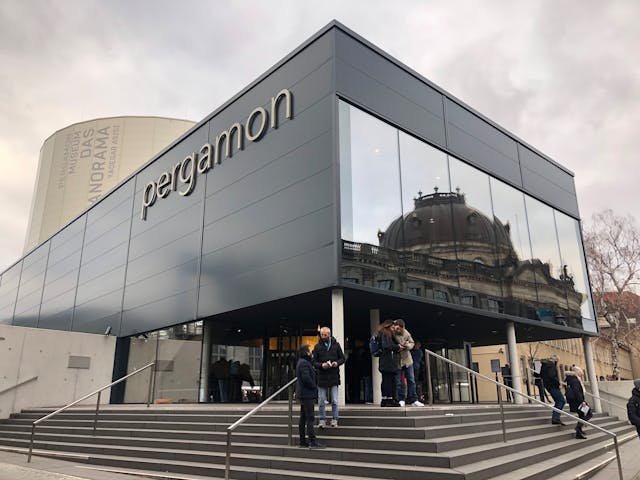
Pergamon Museum
Stepping into this Berlin treasure feels like walking through ancient worlds carved in stone. Housed on Museum Island, it’s a jaw-dropping showcase of monumental relics, like the massive Pergamon Altar from 2nd-century BC Turkey and the electric-blue Ishtar Gate of Babylon. Opened in 1930, it’s been a magnet for history buffs, though parts—like the altar hall—are under renovation until at least 2025. Still, the sheer scale of what’s on display will leave you stunned. Aim for a weekday morning visit to dodge the lines—tickets are about 12 euros, or grab a Museum Island pass.
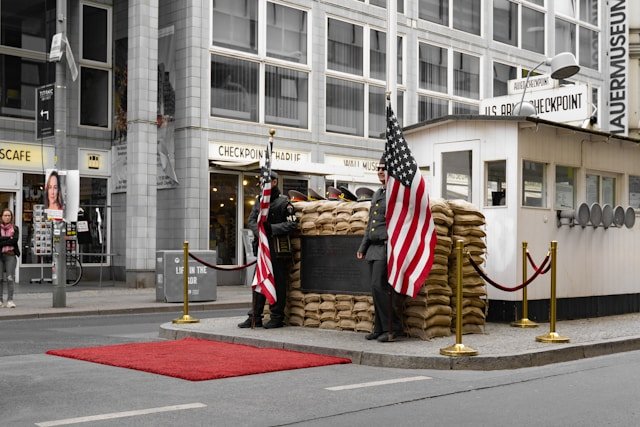
Checkpoint Charlie
If you’re chasing a slice of Cold War intrigue, this Berlin landmark delivers a punch of history in a compact package. Once a tense border crossing between East and West, it’s now a bustling spot where you can almost feel the echoes of 1961, when tanks faced off just steps apart. The replica guardhouse and sign—you know, “You are leaving the American sector”—make it a time capsule, though the nearby actors in uniform add a touristy twist. It’s small but loaded with stories; the museum next door dives into daring escapes and divided lives. Hit it quick, ideally mid-morning, to dodge the selfie crowds.

TV Tower
For a sky-high taste of Berlin, this iconic structure is a must-visit that blends stunning views with a dash of retro flair. Piercing the skyline at 368 meters, it’s the tallest building in Germany, built by the East German regime in the 1960s as a bold statement of progress. The observation deck offers a jaw-dropping 360-degree panorama—on a clear day, you can see all the way to the city’s edges. The rotating restaurant up top is a quirky bonus, serving meals with a side of ever-shifting scenery. Book ahead and aim for sunset; the golden light over Berlin is pure magic.

Holocaust Memorial
Visiting this haunting site in Berlin is a sobering experience that lingers long after you leave. Tucked near the Brandenburg Gate, it’s a vast grid of 2,711 concrete slabs, or stelae, designed by Peter Eisenman to evoke disorientation and loss. Unveiled in 2005, it honors the millions of Jewish victims of the Holocaust, with no signs or names—just stark, silent blocks stretching across uneven ground. Wandering through feels personal, almost isolating, as the slabs tower overhead. Pair it with the underground info center for context, and go early for a quieter, reflective moment.
Activities

Tiergarten
Berlin’s Tiergarten is a lush retreat that feels like the city’s breathing space. Tucked right in the center, this 500-acre park began as a royal hunting ground in the 17th century before opening up as a public haven. Meandering trails lead you past tranquil lakes, oddball sculptures, and the striking Victory Column with its panoramic views. It’s ideal for a chill picnic or a bike ride—rentals are easy to find. Visit in the morning for a calm vibe, catching locals jogging or relaxing with coffee by the water’s edge.

BODY WORLDS Berlin
Ever wondered what lies beneath the surface of the human body? This fascinating exhibition in Berlin offers a jaw-dropping peek inside, using real preserved bodies—called plastinates—to reveal the intricate dance of muscles, organs, and bones. Located near the TV Tower, it opened in 2015 and dives into life’s big questions: what keeps us moving, laughing, loving? You’ll see everything from a lion born at the Berlin Zoo to the world’s first 3D fascia plastinate, FR:EIA, spotlighting the body’s connective tissue. Visit early to dodge the crowds and soak in the awe—tickets start at 16 euros.
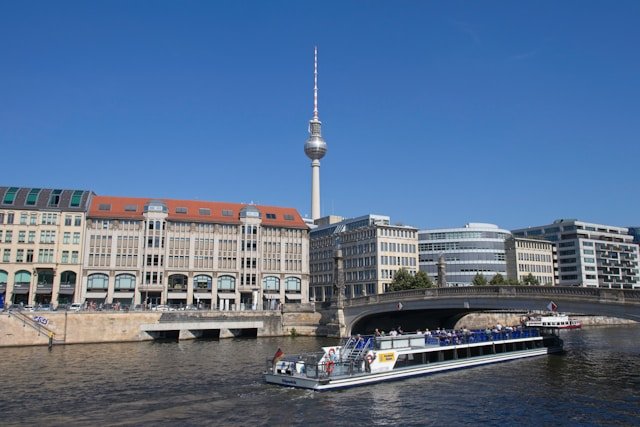
Berlin Cruises
Exploring Berlin from the water is a fantastic way to see the city’s iconic sights in a fresh light. One standout option is the "Historic City Cruise," a one-hour boat trip along the Spree River that glides past landmarks like the Reichstag, Museum Island, and Nikolaiviertel. Starting from piers like Friedrichstraße or Nikolaiviertel, it’s a quick, scenic ride with audio guides in multiple languages spilling the city’s stories—perfect for a relaxed outing. Tickets hover around 20 euros, and it runs daily from late March to October, with special winter cruises like Christmas sailings popping up later. Head out in the morning or at sunset for the best vibes and fewer crowds.

Tickets for Big Bus
Hop aboard the Big Bus in Berlin for a flexible ride through the city’s iconic sights. With two routes—Red for classics like the Reichstag and Blue for East Berlin gems like the East Side Gallery—you can hop on and off at over 20 stops with a 24- or 48-hour pass. Tickets start at €35 for adults, with audio guides in 14 languages spilling fun facts as you go. Upgrade to the 48-hour Premium (€45) for a walking tour and currywurst, or go Deluxe (€55) to add a 75-minute evening tour. Book online for a 10% discount and hit the road—morning rides are quieter for soaking it all in.
Flights
Flying from across the pond or beyond? Stretch your dollars with some clever routing. Shift your dates a day or two for hidden gems, or eye alternate hubs like Amsterdam (AMS) or Frankfurt (FRA), where transatlantic fares might undercut direct shots to Berlin Brandenburg (BER). Sure, you’ll connect—add 2-3 hours and maybe $50 for a train from AMS (1.5 hours) or FRA (5 hours)—but the savings could fund a night at a biergarten. BER’s just 12 miles from Berlin’s heart, so weigh the trade-off: a straight shot or a scenic detour to kick off your German odyssey.
Hotels
Perched in a revamped 1950s tower by the Tiergarten, this spot dazzles with its urban-jungle design—hammocks in rooms, free Mini rentals, and a rooftop bar with Middle Eastern eats at Neni. Reviewers love the quirky details and jaw-dropping zoo views, calling it a playful yet stylish base for exploring the city.
Nestled between Friedrichshain and Kreuzberg, this former factory-turned-boutique hotel oozes creative charm. Guests adore the eclectic rooms—some gold-drenched, others with sunken tubs—and the courtyard events like yoga or live music. It’s the vibe of Berlin’s artsy soul that keeps people coming back.
Right by Alexanderplatz, this sleek hotel wins hearts with its modern rooms, killer city views, and a lobby that screams Berlin cool with street art and cozy nooks. Travelers praise the comfy beds, top-notch breakfast, and unbeatable location—perfect for hopping on a tram or strolling to Museum Island.
Tucked in Kreuzberg, this intimate spot blends laid-back luxury with live music nights in its chic lobby-bar. Guests gush over the spacious, elegant rooms and the calm amidst the storm of Berlin’s nightlife—think jazz evenings and a stone’s throw from Kottbusser Tor. It’s a classy retreat with soul.
Berlin Basics: Top Tips for Tourists
Timing Your Sightseeing
Beat the crowds by starting early—landmarks like the Reichstag or Museum Island are quieter before 10 a.m., giving you breathing room to soak it all in. Summer’s busy, but shoulder seasons (spring or fall) offer milder weather and shorter lines. Book tickets online for biggies like the Pergamon Museum to skip the wait—time’s too precious to waste.
Eat Berlin, Not Just German
Sure, currywurst and schnitzel are must-tries, but Berlin’s food scene is a global mashup. Hit Kreuzberg for killer Turkish döner or Vietnamese pho—Markthalle Neun’s street food Thursdays are legendary. Breakfasts here are an event; linger over coffee and pastries at spots like Zeit für Brot. Cash is still king at smaller joints, so keep some USD swapped to euros handy.
Dress for the Vibe
Berlin’s laid-back yet edgy—think comfy shoes for cobblestones and layers for unpredictable weather (even summer can flip from sun to rain). Locals don’t overdress, so blend in with casual, cool fits; a scarf or jacket works wonders year-round. If you’re clubbing, black’s your ticket—Berghain doesn’t care about your brand, just your attitude.
Berlin’s history hits hard—sites like the Holocaust Memorial demand a quiet moment, so keep the selfies respectful. But don’t miss the city’s pulse: street art in Friedrichshain, flea markets at Mauerpark, or a beer by the Spree. It’s a place that balances heavy memories with a fierce love for today—dive into both.
Berlin on the Move: Navigating the City Like a Pro
Berlin’s U-Bahn and S-Bahn trains are your backbone—fast, frequent, and color-coded for simplicity. The Berlin WelcomeCard (starting at $25 for 48 hours) covers all zones, including buses and trams, and tosses in attraction discounts. Check digital boards for real-time updates, and don’t sweat the sprawl—most lines connect at hubs like Alexanderplatz.
Flat terrain and 620 miles of bike lanes make cycling a Berlin staple. Rentals like Nextbike or Donkey Republic cost about $1 per 30 minutes via app—stations are everywhere. Stick to red bike paths, signal turns, and lock up tight; helmets aren’t mandatory but smart. It’s a chill way to link sights like Tiergarten to Potsdamer Platz.
Central Berlin’s compact— Mitte’s landmarks like Brandenburg Gate and Checkpoint Charlie are strollable in a morning. Sidewalks are wide, crossings are safe, and maps or Google keep you on track. Wear comfy shoes for uneven pavement, and watch for cyclists—they’ve got right of way more than you’d think.
Taxis are plentiful—cream-colored, often at stations or flagged down—and start at $4 with $2 per mile after. Apps like Free Now or Bolt offer rideshare vibes at similar rates, handy for late nights or rain. Short hops beat traffic, but for longer treks, transit’s cheaper. Cash or card works, though drivers prefer small bills.
Berlin’s split into AB and ABC zones—AB covers the city core, while ABC includes outliers like Potsdam or BER airport. Single tickets ($3-$5) last 90 minutes with transfers; validate them at platform machines or face a $65 fine from undercover inspectors. Day passes ($10-$12) are gold if you’re bouncing around a lot.
Berlin’s Climate Cheat Sheet: When and How to Visit
Spring paints Berlin in soft greens and blossoms, with temps climbing from 40°F to 65°F. Days lengthen, perfect for park strolls in Tiergarten or museum-hopping without the crush. Rain’s a cameo guest—pack a light jacket and umbrella—but it’s quieter and cheaper than summer, with a fresh, blooming vibe.
Summer turns up the heat to 70°F-80°F, pulling crowds to riverside beers and open-air fests like Lollapalooza. Sunshine reigns, but humid spells or quick showers can crash the party—keep sunglasses and a poncho handy. It’s peak season, so book early; the city’s alive, from rooftops to flea markets.
Autumn drapes Berlin in golden hues, cooling to 50°F-65°F with crisp, clear days ideal for biking or sipping coffee outdoors. Crowds thin, prices ease, and spots like the Holocaust Memorial feel more personal. Layer up for chilly nights—scarves are your friend—and catch harvest markets in full swing.
Winter drops Berlin to 30°F-40°F, often below with a gray, moody sky—snow’s rare but magical when it sticks. Christmas markets glow from late November, warming you with mulled wine; indoor gems like the Pergamon shine. Bundle in coats and boots; it’s raw but cozy if you lean into the quiet.
Weather Wildcards
Berlin’s weather loves a plot twist—sudden rain or wind can hit any season, so layers are non-negotiable. Check forecasts via apps like WetterOnline; UV’s low year-round, but summer sun still bites. Spring and fall balance comfort and calm, while summer and winter trade extremes for big Berlin energy.
